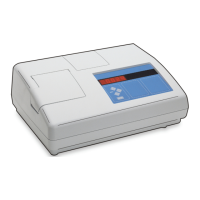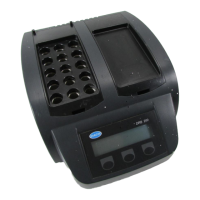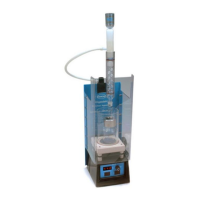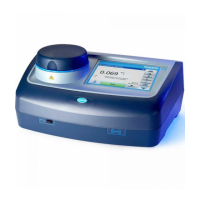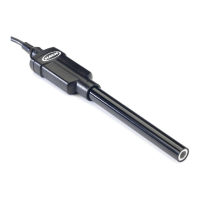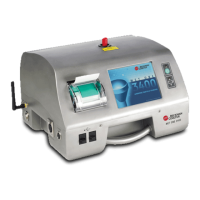SECTION 2, continued
29
2.3.8 Condensation (Fogging)
Note: Warming may alter the
sample turbidity. Measure the
sample without warming whenever
possible.
Condensation may occur on the outside surface of a sample cell when a cold
sample is being measured in a warm, humid environment. This condensation or
fogging of the sample cell interferes with turbidity measurement. Make sure all
moisture is thoroughly wiped from the outside of the sample cell prior to placing
the cell in the instrument for measurement. When condensation is probable, use
the air purge feature of the 2100AN. Refer to SECTION 4 on page 47 for
instructions on connecting and using air purge. If condensation persists even with
air purging, it may be necessary to warm the sample slightly by letting it stand at
room temperature or by partially immersing it in a warm water bath for a short
period of time. Make sure samples are well mixed before measurement.
2.3.9 Calibration Check
Use Gelex
®
Secondary Turbidity Standards for periodic calibration checks. The
instrument calibration is considered valid when the measured NTU value is within
± 5% of the value assigned at the time of the previous calibration. Recalibrate the
instrument when more than ± 5% variation occurs. It is important that the Gelex
vials are clean, free of severe scratches, prepared with silicone oil, and inserted
with the proper orientation when the value first is assigned and subsequently is
verified.
Gelex Secondary Turbidity Standards are stable suspensions of a metal oxide in
a gel. The standards are labeled with the measurement range for which they are
intended. Due to minor variations in glass and individual instrument optical
systems, the true value of the Gelex standards must be determined against
Formazin in the same instrument they will be used with for later calibration
checks.
Note: Store Gelex Standards at
room temperature. Do not allow to
freeze or exceed 50 °C.
Gelex standards remain stable when cared for properly. Handle with care, and
store them in their protective box at room temperature. The Gelex suspension can
separate internally if subjected to low or high temperatures. The turbidity values
of scratched, chipped or pitted Gelex standards change; replace these standards
when they become damaged. Wiping the vial surfaces with silicone oil (supplied
with the instrument) minimizes the effects of minor scratches on the vials.
Note: Calibrated values for
secondary standards are valid only
with the specific instrument on
which they were determined. Do not
use these values for standardization
checks on other instruments.
Turbidimeters must be properly calibrated with a primary standard. Hach
Company recommends use of Formazin Primary Standard for turbidimeter
calibration. Quarterly calibration (every 3 months) is required for U.S.
Environmental Protection Agency reporting under NPDES or NPDWR permits.
If data is not for regulatory reporting purposes, calibrate as experience dictates.
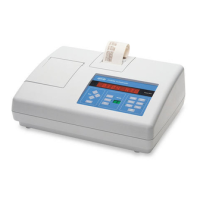
